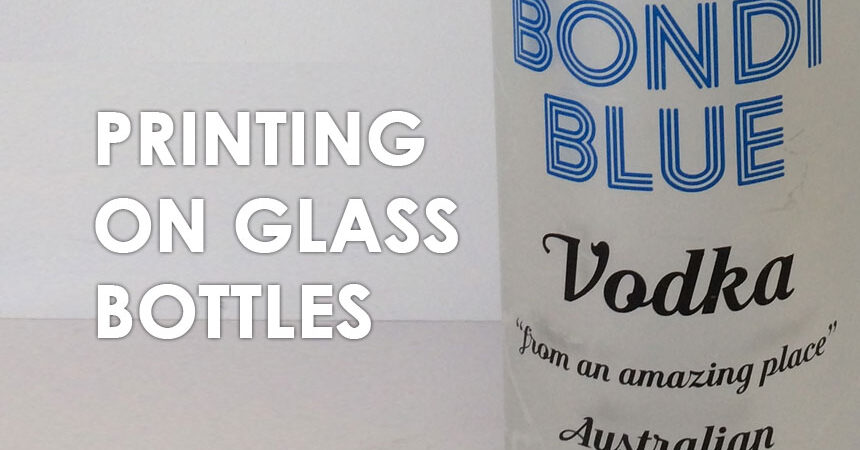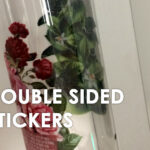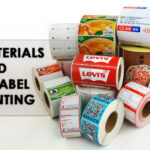Printing on glass bottles
Printing an image or text on glass bottle is an important requirement of modern advertising. Wine bottles stand out and acquire elements of unique style and invulnerability. Let’s look at the basics of printing on glass and focus on UV printing and silk screening.
UV printing on glass
The main limitations in the use of glass are directly related to its properties and physical parameters. On the one hand, it is resistant to various atmospheric phenomena and aggressive environments, on the other hand, its brittleness and density make it very difficult to work with. They impose certain restrictions on the printing technologies used, which we will describe in more detail. For example, the technology of printing on rigid materials in which the image is applied directly to a rigid base, including glass, has recently become increasingly widespread. Let us remind that this technology mainly speeds up and improves the process of making constructions, which previously were made by means of rolling self-adhesive materials onto a rigid base and subsequent lamination. The amount of manual labor is reduced, which reduces the influence of the human factor on the final result.
Material transparency is one of the properties that affects print quality. Most printers on the market print in the CMYK color model, which focuses on printing on white or light bases. Accordingly, it is extremely difficult to print images on transparent media without white (good equipment has a “white color” that allows you to pre-print certain areas of the material) without getting distorted in color. So, images should be created using mostly saturated colors and printing should be done in several passes and with more ink than on white media.
Thus, the natural solution for printing on a glass bottle or printing on any transparent material is often the use of additional white ink. But examples of using equipment with such an option are rare, although it certainly gives the printing technology additional advantages. For example, in the case of transparent or translucent materials, white can not only serve as a backing, but also fill colorless fragments. White can also be used as a covering layer on parts of the image, which allows for unique effects such as clouds in the sky or an airplane trace.
An interesting variant of solving the problem of white backing is possible when there are a lot of gaps in the image and small fillings can be printed directly on the adhesive layer of any self-adhesive film. The image is fixed on the back of the glass and does not require lacquering, since the adhesive backing itself acts as protection on one side and the glass itself on the other.
Application of UV inks in offset printing
The UV sheet offset uses fast-setting formulations with siccative’s, solvents, binders and various pigments. Machines working with UV materials are equipped with special rollers and webs on which the rubber does not swell. The finished prints are suitable for post-printing processing – embossing, die cutting.
Today offset printing on traditional UV materials hardening under mercury dryers is widespread. After curing the surface is covered with varnish to increase its durability. But highly reactive inks have a wider range of applications. They cure under energy saving (ECO UV) and LED UV lamps. There is no need for a protective varnish – the surface layer is resistant, the adhesion is high.
Offset machine printing with UV ink
When printing with UV offset, printing technologists need to keep a few things in mind:
- Dirty, weak lamps cause sticky surfaces and unstable inks;
- Improperly selected offset webs or paper with a weakened surface layer causes fibers to be pulled out;
- Improperly set pressure between webs or excessive dampening liquor will result in halftones not being imprinted;
- Black pigment should not be placed over other paints. It absorbs ultraviolet light, and the rays will not pass into the layers beneath it. For this reason, printers follow the B-C-M-Y color sequence (black, blue, magenta, and yellow) strictly when overlaying tones;
Printing with ultraviolet hardenable inks
One of the types of silk-screen printing, which can already be safely separated into a separate type of decoration of the bottle, is printing with UV-curing inks.
Printing with UV inks requires neither high-temperature firing nor heating, because the curing occurs instantly. That is why one of the advantages of this type of printing is the possibility to print on an already painted surface of the bottle.
Decorating a bottle of alcohol, decorating the bottle, how to decorate the bottle, the decor of glass products, decoration of glass products, decorating glass products, decorating a bottle for alcoholic beverages, bottle decoration, bottle screen printing.
Other advantages of UV-curable inks include:
- The possibility of applying full-color images to glass
- Eco-friendliness: no heavy metals in the composition and ease of disposal
Conclusions
The cost of decorating glass bottles, according to experts, is always individual and depends on the complexity of decoration (depicting a picture on one or more sides), the complexity of the shape of the bottle, the number and composition of the paints used (paints containing gold or platinum are much more expensive than ordinary colors), and the number of manufactured bottles (the more batch of decorated bottles, the lower the cost of special grids, rigging and retooling equipment).


